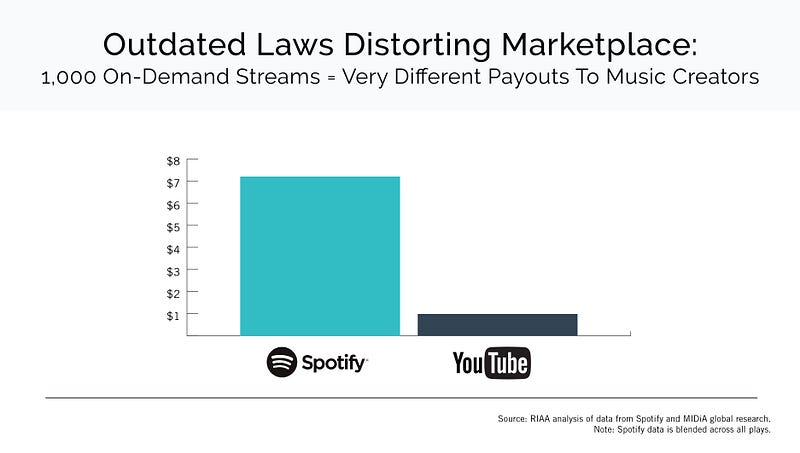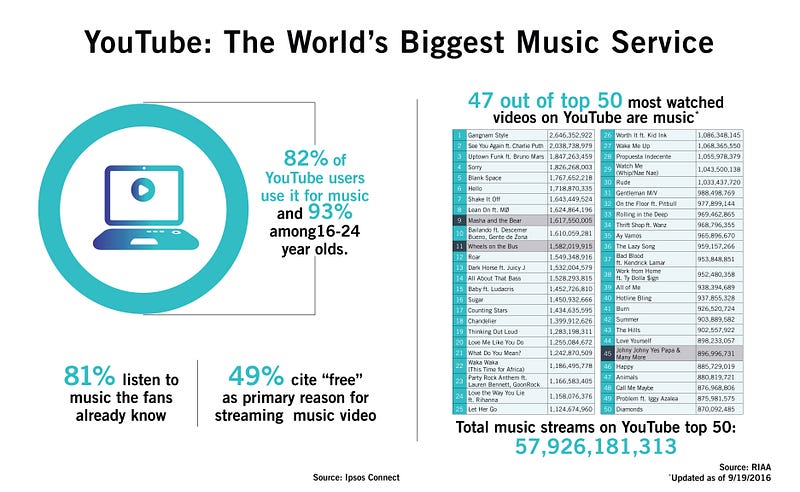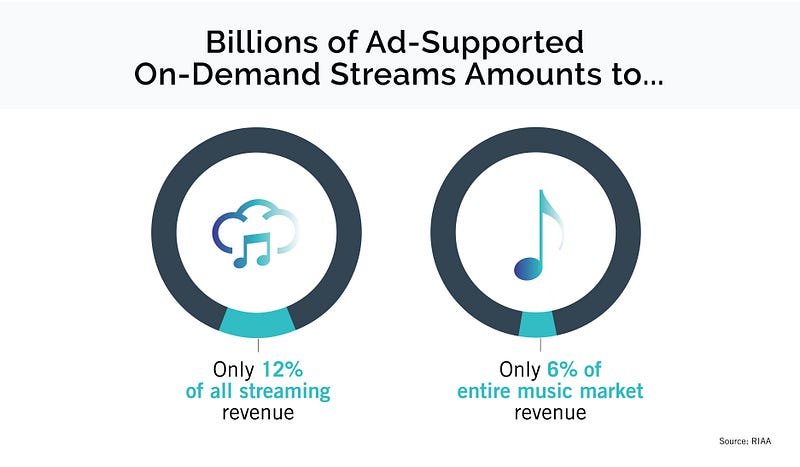Although it’s been about half a decade, the music business has, at long last, seen some appreciable growth in 2016, thanks largely to streaming. However, music continues to be undervalued, and the industry remains hobbled by outdated laws.
________________________
Guest post by Cary Sherman, Chairman & CEO, RIAA
For the first time in over a decade, we can report that the American music business grew at a healthy rate in the first half of 2016. That growth is propelled by music subscriptions to services like Spotify, Apple, and Tidal on pace to surpass $2 billion by the end of the year.
Streaming in all its forms accounted for almost half of all recorded music revenues in the first half of 2016. This represents a remarkable transformation and reinvention by a business that was principally physical products just six years ago.
Over the first half of 2016, there were an average of more than 18 million music subscriptions, doubling the 9 million reported at the same time last year. Music subscriptions are now significantly bigger revenue generators than CD sales, and virtually equal to permanent downloads.
More than any other creative industry, the music business is leading the digital revolution, adopting and embracing new business models to serve today’s fans. Music drives commerce and culture. It is an essential element of any major technology firm’s consumer platform. Musicians top virtually all social media channels (musicfuels.com) and music frequently drives the trending online conversation. According to Nielsen, there were an astounding 209 billion on-demand music streams in the first half of 2016.
Despite the massive consumer demand for music, the damning reality remains that music is fundamentally undervalued, with broken, outdated laws threatening the entire music community and distorting the marketplace. The result? Many services rake in billions of dollars for themselves on the backs of music’s popularity but pay only relative pennies for artists and labels. Pirate sites operate with seeming impunity.
One example — does it make any sense that approximately 1000 plays of a song on one streaming service yields dramatically different payouts than a song on a different service that gets to hide behind the failing 1998 Digital Millennium Copyright Act (DMCA)?

It’s the same song requested by the user. To the fan, it’s no different, but to the community of musicians and labels who work tirelessly to write, record and bring that music to the public, it can be the difference between making music as a full-time job or going back to waiting tables. Of course, various music rights holders may have different views of the precise economics of Spotify, or any subscription service for that matter. The example above illustrates just how much the DMCA benefits platforms like YouTube and disadvantages companies like Spotify, not to mention the creators of the music. It is notable that both Spotify and YouTube offer subscription services as well as ad-supported on-demand music that is free to users, yet the fundamental disparity between what each of them pays is jarring, and indefensible.
Or think about it this way: according to fresh data from Ipsos Connect as well as our own analysis, YouTube is the world’s most popular music service according to a variety of metrics.

One might therefore conclude, based on that data and the billions and billions of music streams on YouTube, that it would have an outsized, dominant contribution to the American music business. But just the opposite is true. All ad-supported, on-demand revenue streams, both audio and video, collectively generated revenues of only $195 million in the first half of 2016 — just six percent of the year’s entire music market revenue:

Fortunately, policymakers in the U.S. and abroad are poised to take a fresh look at the broken copyright and licensing systems. The litany of outdated regulations and laws that subject musicians to a below-market valuation of their works is long and growing: the lack of a performance right for FM and AM radio, an anachronistic royalty rate subsidy for billion-dollar, highly-profitable SiriusXM, and, of course, a broken DMCA that no longer works for musicians.
Reform need not come only from Congress. Progress can come in the form of voluntary agreements as well. For example, does anyone believe that Google is unable to better police its own websites, give artists more control over their works and keep unlicensed songs off YouTube? This is the company, after all, that built the world’s most successful search engine, mapped the world’s streets, is building a driverless car, created artificial intelligence to beat humans at the most challenging game in the world and brags about eight pillars of innovation.
Google can do better.
We are on the cusp of a true music renaissance. The foundation is there. But we’re not there yet. Critical reforms are still needed to ensure a music ecosystem that works for both fans and creators.
Cary Sherman, Chairman & CEO, RIAA